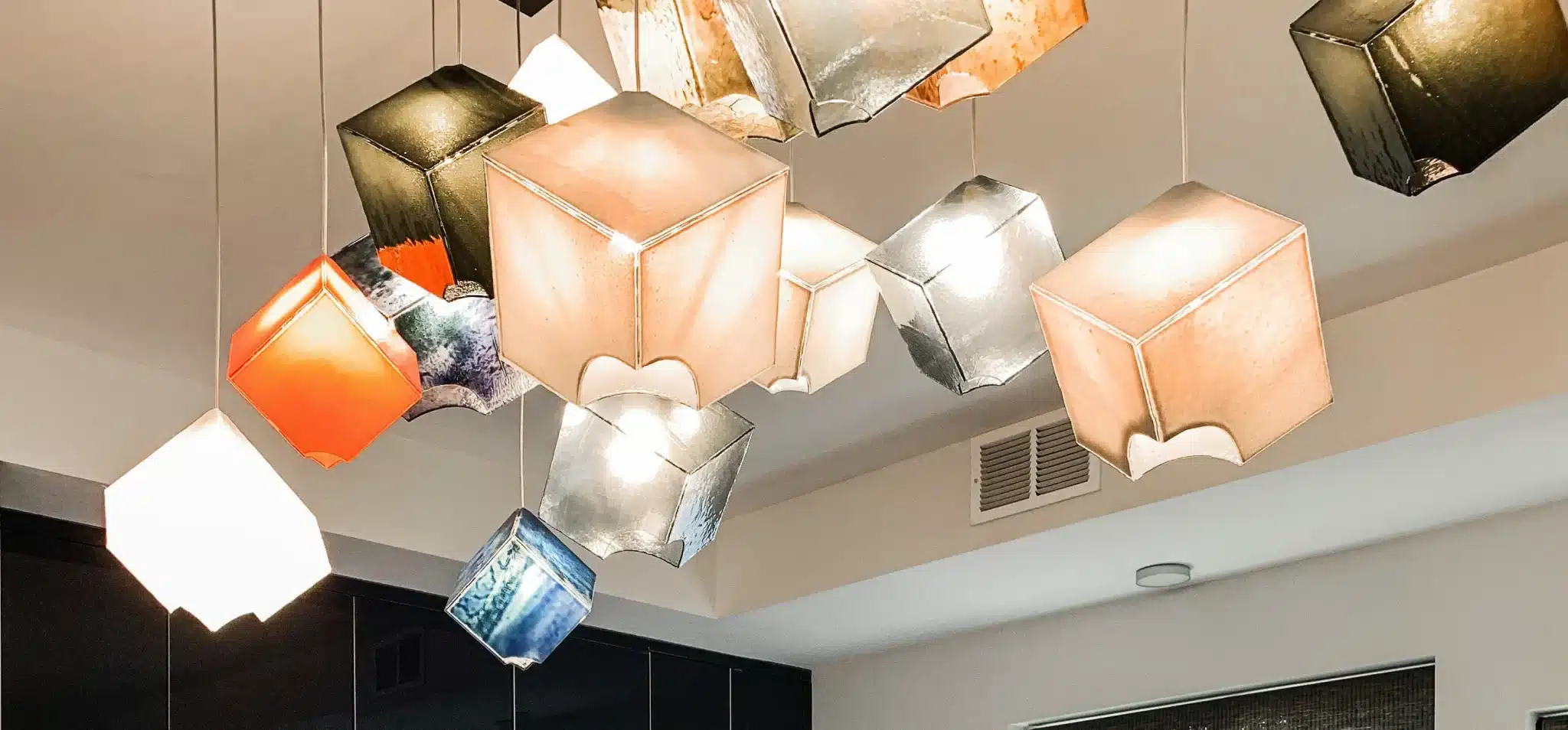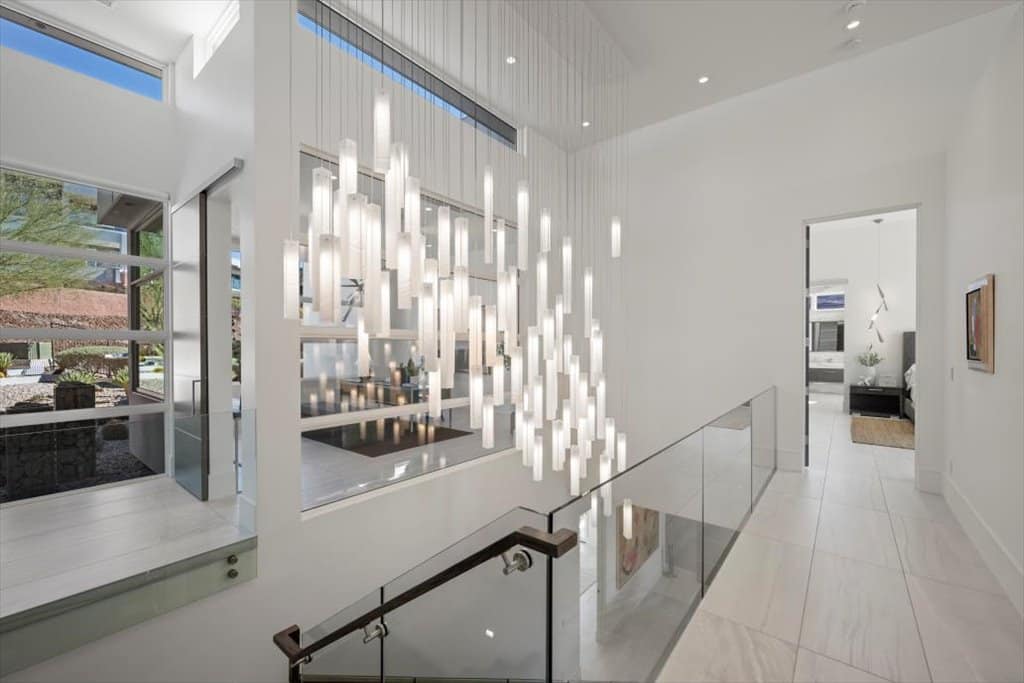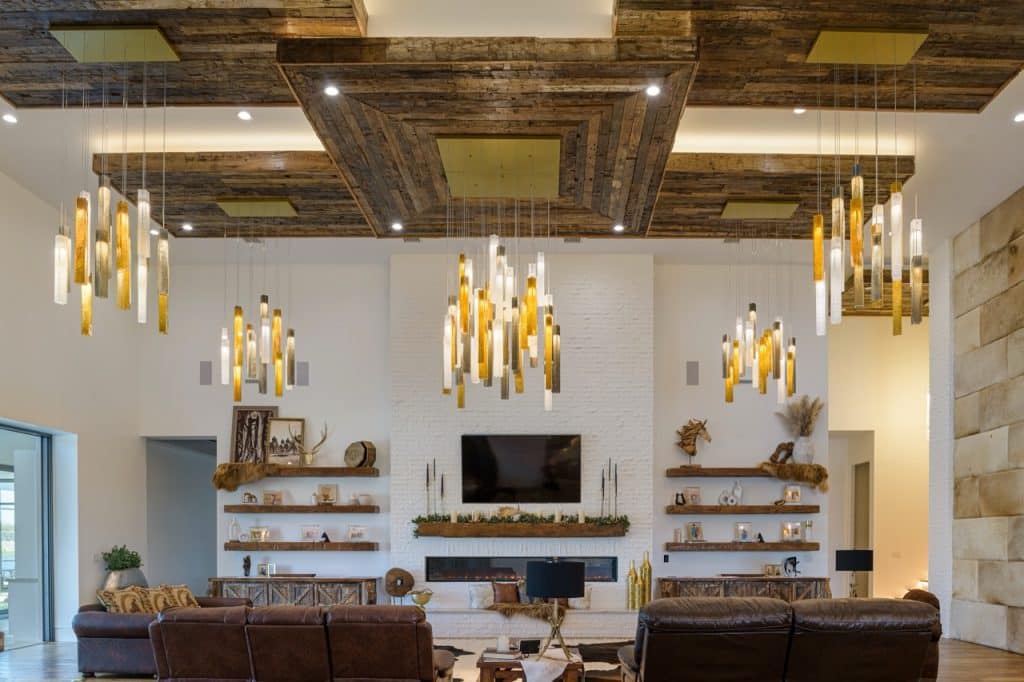

Designing lighting for high ceilings is both exciting and challenging. While tall spaces such as entryways, staircases, living rooms, and dining areas with vaulted or cathedral ceilings create an impressive sense of openness, they also demand a careful lighting strategy. Without the right plan, these rooms can feel cold, unbalanced, or underlit.
In our design practice, we use a clear, structured method when working with clients. By following the three steps below, we ensure that every high ceiling lighting design combines functionality, proportion, and style—making the space both visually striking and comfortable to live in.
The first step is to look at the type of space you’re designing. Each room has a different role, and from that role the lighting parameters are derived—scale, brightness, style, and placement.
Entryways and foyers – A statement chandelier or pendant sets the tone for the home.
Living rooms – Balance ambient lighting for daily use with accent lighting to create warmth and intimacy.
Staircases – Combine practical illumination for safety with a vertical design feature that enhances the drama of height.
Dining areas with high ceilings – A chandelier centered above the dining table anchors the space, adds intimacy despite the height, and turns the table into the natural focal point.
✨ Pro insight: When the lighting plan grows from the room’s role, tall spaces transform from empty volumes into environments with flow, intimacy, and personality.
Lighting in high-ceiling spaces should serve a clear design role. We categorize it into three main types:
Focal Point – A chandelier or pendant cluster that commands attention and visually anchors the height of the space.
Artistic Statement – A sculptural or dramatic fixture that expresses style, whether bold and eye-catching or minimal and airy.
Functional Lighting – Practical illumination for everyday use, often achieved with recessed lights, sconces, or track systems.
✨ The most successful designs combine these roles—one fixture may act as both focal point and artistic statement, supported by functional layers for balance.
The third step is to determine the functional purpose of each fixture within the space:
Primary Source of Light – The main fixture must deliver sufficient brightness and spread, ensuring the entire volume of the room is lit evenly.
Secondary or Supportive Source – Complementary fixtures—like wall sconces or recessed lights—fill in gaps and prevent harsh shadows.
Accent or Decorative Light – Used for mood, atmosphere, or highlighting architecture. Perfect for creating intimacy in large, tall spaces.
Lighting for high ceilings is about much more than choosing a big chandelier. By starting with the room’s function, clarifying the role of each fixture, and planning the functional layers of light, you can transform tall, challenging spaces into warm, inviting, and visually memorable interiors.
High ceilings offer dramatic visual potential — but they also demand smarter lighting design. For luxury spaces, proper lighting isn’t just about brightness; it’s about layering, scale, and intention. Here’s how to approach lighting design for high ceilings in different zones of the home — and how to choose between decorative, statement, or minimalist styles.
Your entryway sets the tone. Lighting should balance functionality with a sense of grandeur. For high ceilings, the chandelier or pendant should fill roughly the top third of the vertical space and leave at least 7 ft (2.1 m) of clearance below.
Lighting Styles:
Statement chandelier: A layered chandelier that makes a strong first impression.
Decorative lighting: Sculptural or glass fixtures that complement architectural details.
Minimal: Sleek, modern pendants for understated elegance.
Add wall sconces or uplights to soften shadows and create visual depth.
Staircases link your home’s levels — lighting should enhance that vertical connection. Use long pendants, chandelier cascades, or multiple smaller fixtures at varied heights. Add sconces or step lights for safety and atmosphere. The goal: a space that feels both functional and visually dynamic.
High-ceiling living rooms need both comfort and drama.
Two Lighting Types:
Ambient Lighting: recessed LEDs, uplights, or cove lighting for even brightness.
Statement Light Fixture: a custom chandelier or artistic pendant as the centerpiece.
Even when dimmed, ambient light keeps the space practical. Use separate dimming zones to control mood and function.
Styles:
Statement: bold, artistic chandeliers.
Decorative: elegant sculptural forms.
Minimal: linear pendants with clean geometry.
Position your chandelier above the seating area for balance and harmony.
Dining lighting should feel intimate yet impressive. Hang chandeliers or pendants about 30–36 inches (75–90 cm)above the table. For tall ceilings, extend rods or chains so the light meets the eye level. Choose statement chandeliersfor a formal look or minimal linear pendants for modern style. Add wall or accent lights for depth and a warm glow.
Designing lighting for high ceilings means layering statement, decorative, and ambient fixtures. Use proportion, spacing, and dimming control to create luxurious, balanced interiors that highlight architecture while keeping light comfortable and functional.



Need Design Advice?
To begin the customizing process, we need some basic details
Each light fixture is made to order. We will work with you to design a light fixture that will fit your space perfectly